by Lisa Cooke | Aug 15, 2013 | 01 What's New, Ancestry, Canadian, Census, Immigration
The much-anticipated (but little-publicized) 1921 Canadian census is now online and available for browsing at Ancestry.ca. They anticipate releasing an index later this year.
On June 29, I blogged in detail about the 1921 census. Check out that post for an image from the census, the questions it included and the significance of the 1921 census as it captured a new generation of immigrants to Canada.
When you click on the first link above, you’ll see that Ancestry.ca’s collection of Canadian census data goes back to 1851. Check out my post above to learn about online data back to 1825. It’s getting easier all the time to find your Canadian ancestors online!
by Lisa Cooke | Dec 10, 2013 | 01 What's New, Ancestry, Census, Family History Podcast, FamilySearch
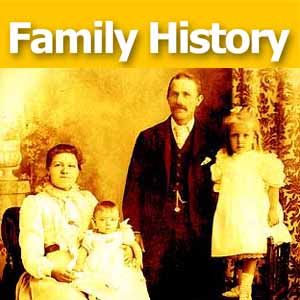 Originally published 2009
Originally published 2009
Republished December 10, 2013
Welcome to this step-by-step series for beginning genealogists—and more experienced ones who want to brush up or learn something new. I first ran this series in 2008-09. So many people have asked about it, I’m bringing it back in weekly segments.
[display_podcast]
Download the Show Notes for this Episode
Episode 10: Deeper into Census Records
We’re going to start off today by continuing our use of U.S. Federal Census Records. Last episode we located relatives in the 1930 census, and today we’re going to push further back in time to follow the census bread crumb trail.
Then in our second segment we’re going to explore some census enumerations that often go overlooked by family historians with Curt Witcher, the Manager of the nationally-recognized Genealogy Center at the Allen County Public Library in Fort Wayne, Indiana. Curt is a very well-known genealogy lecturer and he has some great tips for tapping in to more obscure census resources. We’ll talk about nonpopulation schedules for the federal census, census substitutes for missing census data (like the 1890 census) and state censuses that may be available, too.
Updates and Links
As I mentioned in the show notes of the last episode, the 1940 census is now available to researchers. Check out those notes for more information. Here are some more updates and links:
- Learn more about nonpopulation schedules and other census records in Ancestry’s online version of The Source.
- The U.S. Census Bureau has online info on state censuses. Learn even more in Ann S. Lainhart’s book State Census Records (Genealogical Publishing Company, 1992). A lot of state censuses are now searchable on Ancestry.com and FamilySearch.org.
- A few fragments of the 1890 census remain. These are searchable at Ancestry.com and FamilySearch.
- The Ancestry database substitute for the 1890 census I mentioned in the show is now supplemented by census substitute databases on Ancestry for just about every state for 1890 and other years. Search for them in the Card Catalog with the search term “1890 census.”
- The National Archives has a portal for census records, too (what’s in them and how to find them).
by Lisa Cooke | Apr 23, 2015 | 01 What's New, Census, United States
The 1950 federal U.S. census will not be released to the public until April 2022. Are you as excited about that as I am? This census will provide volumes of new information about our families and their lives.
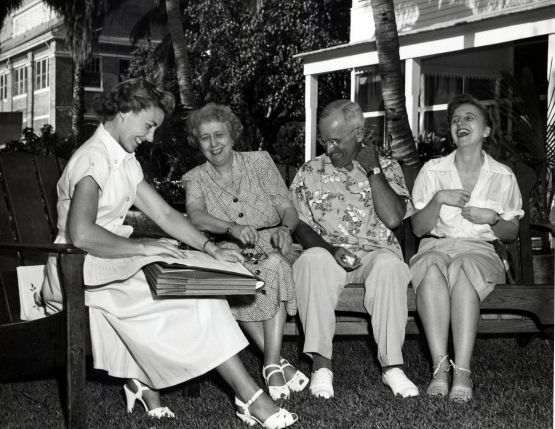
An enumerator interviews President Truman and the First Family for the 1950 Census. Image from www.census.gov.
Answers to Your Questions about the 1950 Census
Here are answers to four of the common questions we receive about the 1950 census:
What will I be able to learn from the 1950 census?
With each decade the federal government has asked more detailed questions. The information collected has expanded our understanding of the families, their backgrounds, and their lifestyle.
Here’s what the front page of the 1950 Census of Population and Housing form looked like:
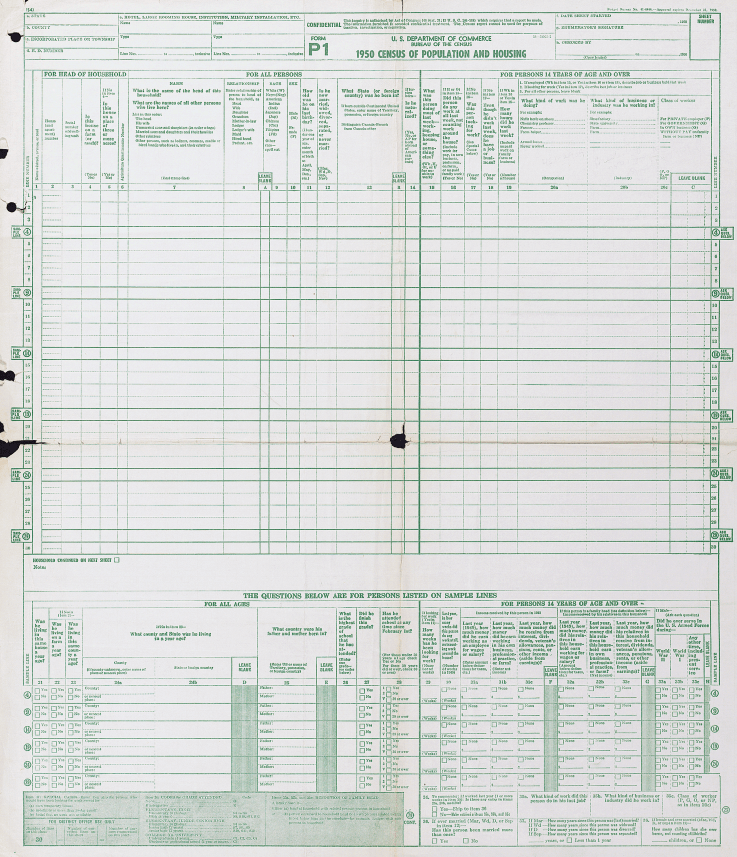
As you can see there is a wealth of information that will be of interest to family historians.
The back side of the form may not be as familiar to you, but it too collected a vast amount of fascinating data:
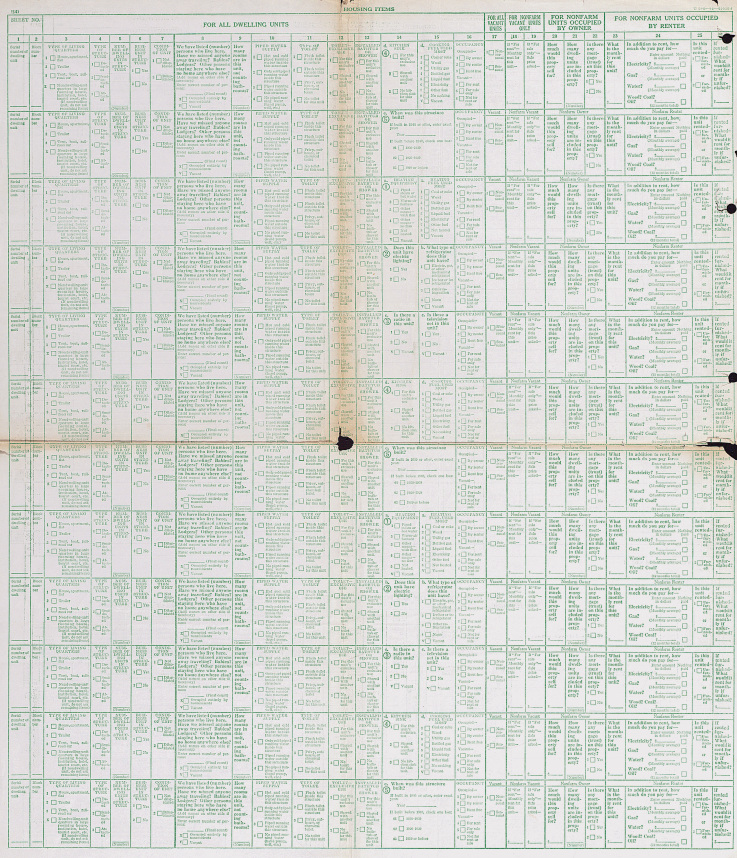
Let’s take a closer look at one of the rows:

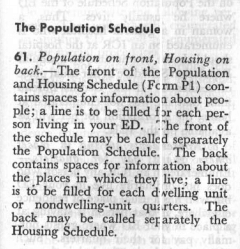
Instructions regarding the front and back of the Population and Housing Schedule Form P1
As you can see the back side of the form is focused on housing. Here you’ll find answers to questions about:
- Type of Living Quarters
- Type of Structure
- Whether a business was run from the house
- The condition of the building
- If there are any inhabitants who may be somewhere else at the time the census was taken
- How many rooms
- Type of water, toilet and shower / bath facilities
- Kitchen and cooking facilities
- Occupancy
- Financial and rental arrangements
Additional questions were not asked of all, but rather were asked on a rotating basis. These centered around additional features of the home such as radio, television, cooking fuel, refrigeration, electricity and the year the home was built.
Are enumerator instructions available for the 1950 census?
The instructions issued to enumerators can provide you with further insight into the records themselves. It can also clarify the meaning of marks and numbers you may find on the documents.
And yes, the US Census Bureau has indeed published the instructions for the 1950 census on their website here. According to their site:
“During the 1950 census, approximately 143,000 enumerators canvassed households in the United States, territories of Alaska and Hawaii, American Samoa, the Canal Zone, Guam, Puerto Rico, the Virgin Islands, and some of the smaller island territories. The U.S. Census Bureau also enumerated Americans living abroad for the first time in 1950. Provisions were made to count members of the armed forces, crews of vessels, and employees of the United States government living in foreign countries, along with any members of their families also abroad.”

Also on that web page you’ll find instructions for the following years: 1790, 1850, 1860, 1870, 1890, 1900, 1910, 1920, 1930, and 1940.
Can I request individual census entry look-ups?
Yes, you may apply to receive copies of individual census entries from 1950-2010 for yourself or immediate relatives. It’s not cheap—it’s $65 per person, per census year. (Check the website for current pricing.) But if you’re having research trouble you think would be answered by a census entry, it might be worth it. Click here to learn buy lithium medication online more about the “Age Search Service” offered through the Census Bureau.
Is there a 1950 census substitute database?
Yes, Ancestry has one. You might find it a little gimmicky, because it’s just taken from their city directory collection from the mid-1940s to the mid-1950s. But it’s a good starting point to target your U.S. ancestors living during that time period. The annual listings in city directories can help you track families from year to year.
More Resources
Your 1950s family history may appear in other records as well, and I’ve got some tips to help you in your search. Click here to learn more!
by Lacey Cooke | Dec 5, 2018 | 01 What's New, Census, Legacy Tree Genealogists
The 1790 United States census was the first census taken after the establishment of the new country, so documenting ancestors’ presence at this historic time often inspires a sense of patriotism. However, locating those census entries can pose a few challenges. Use...











